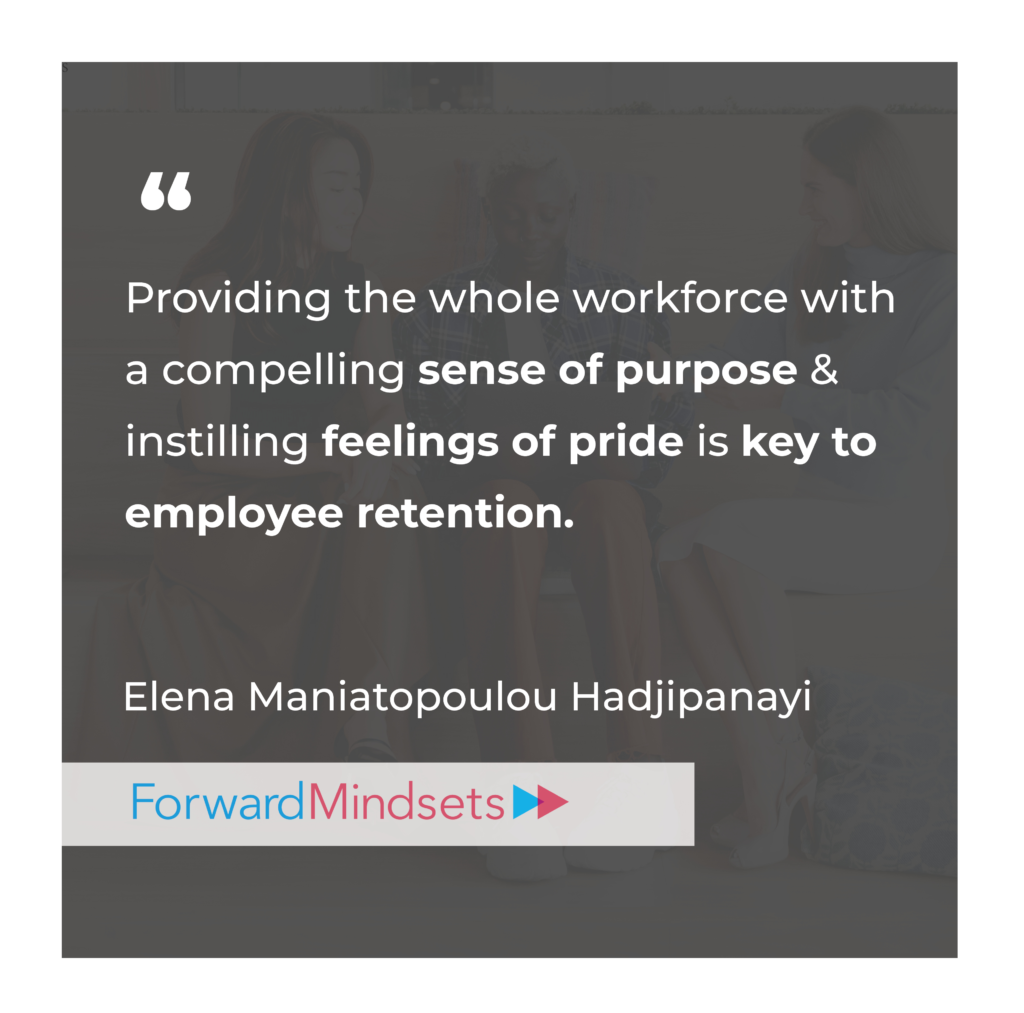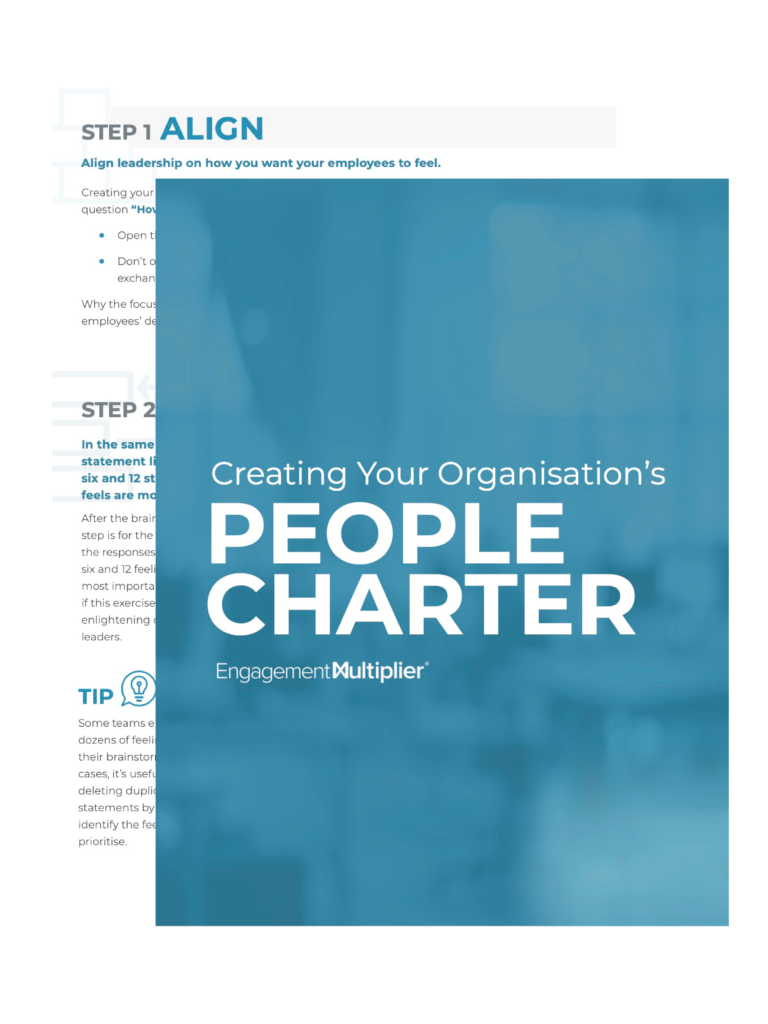Just 32% of employees are satisfied with their jobs, according to Gallup, which suggests that the higher-than-usual levels of employee turnover observed nearly worldwide isn’t going to abate soon.
However, much of the discussion about employee retention today centers on tactics for retaining people, rather than taking aim at the factors eroding job satisfaction and employee engagement – thus impelling employees to explore other opportunities.
At this juncture, senior leaders need to consider how their own leadership impacts employee turnover. Especially as growing businesses scale, it’s easy to lose sight of how decisions play out across the enterprise, impacting culture and morale. The impact on retention is clear: Gallup also found organisations that focus on cultivating their culture experience 72% lower attrition.
Sustainably improving employee retention rates may require leaders to rethink certain aspects of their operations and culture. Here are three examples.
How goals can incentivise behaviour
Whether an organisation calls them goals, key performance indicators (KPIs), objectives and key results (OKRs), or any other name, how an organisation measures results has a profound impact on the employee experience, and thus, the rate of turnover. A good way to think about this is simply to reflect upon is the relationship between the metrics the organisation relies upon and the results it seeks to achieve.
Here’s an example. Imagine an organisation with a large contact centre, comprising teams of representatives who field customer queries and resolve their issues over the phone, email, and chat. Conventional approaches to measuring the productivity of contact centre representatives focus on metrics such as how long it takes agents to answer calls, how much time agents spend on calls, and how much time they spend on work associated with the call after it’s completed. It’s not uncommon for contact center representatives to have quotas associated with the number of calls or cases they handle in an hour or a day which is a function of how quickly they complete call-related tasks, and how swiftly they answer new calls.
These metrics seem reasonable until you consider the behaviours they may be incentivising. If customers have to make repeated calls to resolve their issues, the productivity metrics may be wholly misleading. Measuring the number of touches required to close a case and customer satisfaction can paint an entirely different picture of a team’s performance. Conversely, continually pushing employees to ever-growing quotas can create conditions that burn out staff and leave them feeling bad about the work they do: a recipe tailor-made to increase employee turnover.
As the saying goes, “that which is measured gets done.” The question for leaders, when it comes to measurement, is whether the goals they set (and the metrics they use to assess them) are inadvertently creating conditions that impel people to leave.
Organisational curiosity
When we queried our community of leadership coaches and business consultants about their advice for how leaders can play a role in improving employee retention rates within their organisation, Ben Freedman, co-founder of Bubble Chamber, a business consultancy specialising in helping leaders increase both profit and social impact, said: “Be curious, not judgemental.”
Curiosity is an underrated element of successful leadership, and it’s a trait that most organisations don’t truly cultivate.
“Curiosity is much more important to an enterprise’s performance than was previously thought,” wrote Francesca Gino for an article in Harvard Business Review on the business case for curiosity. “Cultivating it at all levels helps leaders and their employees adapt to uncertain market conditions and external pressures: When our curiosity is triggered, we think more deeply and rationally about decisions and come up with more creative solutions. In addition, curiosity allows leaders to gain more respect from their followers and inspires employees to develop more trusting and more collaborative relationships with colleagues.”
Ben shared an anecdote with us that drew a bright line between curiosity and employee retention.
“Be curious, not judgemental.”
About 25 years ago I employed an accounts executive who was very bright, had the knowledge to do the job but suffered from poor time-keeping and a tendency to make silly mistakes.
After many warnings and reviews with no progress, I eventually decided that this was detrimental to the business and that, despite the cost in time, money, and emotional energy, it would be best to let her go.
At the time we employed an internal Coach who asked whether we would be happy to invest some of their time in working with this person to see whether he could come up with an alternative.
A few sessions later he came back to me and explained that she was currently very stressed by potential issues that were arising from the fact that her 10-year-old son was about to transition into Senior school and as a single parent life was about to become much more complicated and potentially hazardous.
She was trying to juggle these responsibilities with the financial need to hold down a full-time job and commute, impacting her timekeeping as well as her mental well-being and focus.
The Coach presented an idea the two of them had hatched. Would we be happy for her to go part-time – coming in later and going home earlier so she could be around for her son? She would be happy to reduce her pay accordingly and felt confident that she could make up the lost income with dress-making – an area where she had experience but not the time to create a small business.
We agreed and she continued to work for us highly effectively for a number of years.
“Curiosity saved the day, and I learned a big lesson that has stuck with me ever since!” Ben recalled in sharing this account. We loved this story for a few reasons. First and foremost, it was clearly beneficial to both the business and the employee. However, the lasting impact this lesson had on Ben is possibly even more important. Curiosity is more likely to be quashed than cultivated, and the systems and processes we put in place can easily crowd out curiosity in the organisation. According to research Francesca Gino conducted for the previously cited article, most organisations actually discourage curiosity, believing it will lead to inefficiency and risk. In a survey of more than 3,000 employees, Gino discovered that 70% of respondents face barriers to asking more questions at work.
Purpose & wellbeing drive employee retention
As we enter year three of a global pandemic, it’s no surprise that personal wellbeing is a widely-held concern. Interestingly, a sense of purpose is directly linked to wellbeing at work: research on finding purpose at work from McKinsey found that employees who can live their purpose at work are healthier and more resilient than those who are unable to do so. (They’re also more productive!)
“Providing the whole workforce with a compelling & sustainable sense of purpose, instilling feelings of pride in their souls and minds is key to employee retention,” says Elena Maniatopoulou Hadjipanayi of Forward Mindsets. “Prioritising employee wellbeing and connection with employees while pursuing business objectives is of crucial importance.”
Elena touches on an important element related to employee wellbeing, and that is how people feel. Our founder, Stefan Wissenbach, is fond of saying, “If you understand how people feel, you’ll understand why they behave as they do.” Feelings are an important lens many leaders fail to use.
However, much of employee engagement is down to how people feel at work. Whether or not an employee feels their manager supports them and treats them fairly, or they feel a sense of belonging and purpose can have a significant bearing on their engagement – and thus their performance, morale, and likelihood of leaving.

Leaders who take the step of ensuring people feel they belong, are supported, and are psychologically safe are leagues apart from those who simply pay lip service to people’s feelings – or worse, ignore them altogether, creating the conditions ripe for employee turnover.
To help leaders take this step, we’ve developed a simple guide to creating what we call a People Charter. The document is meant to outline the employee experience the company aspires to deliver and ensure employees feel supported and valued. You can download your copy of the guide here.
“Many leaders are uncomfortable when it comes to employee feelings,” writes Stefan in a recent article highlighting the need for caring leaders. “Or, worse, they’re dismissive of how people feel, preferring to simply believe that employees are just in it for the money. When leaders fall into either of these traps, they are abandoning an opportunity to galvanise their employees and create the kind of workplace that people value – and more specifically, the kind of workplace they don’t want to leave.”
The actions leaders take always have an impact, whether positive or negative. Taking time out to assess whether your organisation’s approach to performance measurement, tolerance of curiosity, and concern with people’s wellbeing and connection to purpose may reveal unintended consequences downstream.
A good place to start is our own Benchmark Assessment, which invites feedback, and will enable you to quickly see how connected your people feel to purpose and understand how they perceive their direct leaders and the organisation as a whole.



